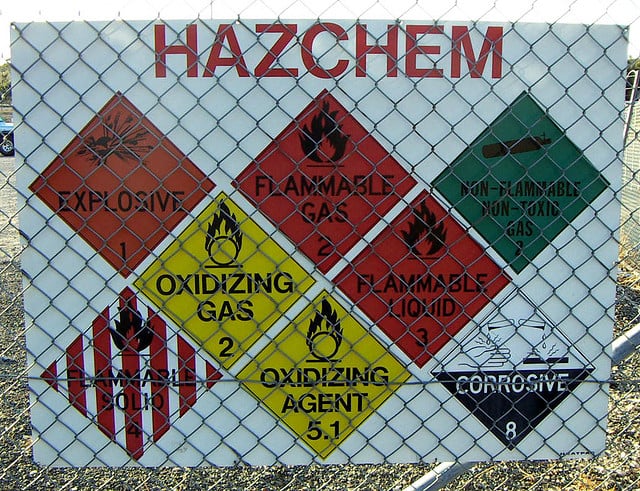The Office of Environmental Health Hazard Assessment (OEHHA) has made a number of changes to the list of chemicals known to the State of California to cause cancer or reproductive toxicity for purposes of the Safe Drinking Water and Toxic Enforcement Act of 1986 (Proposition 65).
Audit, Compliance and Risk Blog
STP Editorial Team
Recent Posts
Changes to California Carcinogen and Reproductive Toxin Lists
Posted by STP Editorial Team on Wed, Mar 19, 2014
Tags: Health & Safety, California Legislation, Environmental risks, Environmental, EHS, EPA, Hazcom
OSHA Seeks Public Comment to Improve Chemical Safety
Posted by STP Editorial Team on Mon, Feb 24, 2014
In April 2013, 15 people were killed in an ammonium nitrate explosion at a facility in Texas. In response OSHA has announced a request for information (RFI), seeking public comment on potential revisions to its Process Safety Management standard and related standards, as well as other policy options to prevent major chemical incidents. To read the news release and learn more information on how to view the RFI and submit comments, click here.
Motor Vehicle Air Conditioner (MVAC) Refrigerants Have Environmental Impacts
Posted by STP Editorial Team on Wed, Feb 05, 2014
EPA has a new fact sheet, “Section 609 Regulatory Requirements: Motor Vehicle Air Conditioning” that outlines the requirements to be followed to prevent the release of refrigerants during the servicing of MVACs and MVAC-like appliances. This fact sheet discusses the regulatory requirements for technician training and certification, sales restrictions, safe disposal, recordkeeping, equipment certification, and approved equipment. It also addresses the importance of protecting our ozone layer and explains the serious impact MVACs can have on the climate:
Tags: Employer Best Practices, Health & Safety, California Legislation, Environmental, Transportation
Canadian Oil Industry—Liability Insurance for Rail vs. Pipeline
Posted by STP Editorial Team on Wed, Jan 29, 2014
Canadian regulators are focusing their attention on facilitating development in the oil and gas industry, and they are also increasing the accountability of operators. Significantly, environmental liability insurance requirements are expected to increase for both pipeline and railway operators, reducing the extent to which governments and taxpayers cover the costs of cleanup and other damages caused by spills and accidents.
Tags: Business & Legal, Environmental risks, Environmental, Oil & Gas, Insurance, Insurance Claims, Transportation, Canadian
An investigation by the U.S. Occupational Safety and Health Administration (OSHA) found that New Prime Inc. retaliated against a truck driver by blacklisting him in the commercial transport industry after he sought medical attention for a work-related back injury. When he was given doctor’s permission to return to work he opted to seek employment with other motor carriers only to discover his attempts to do so had been sabotaged by his previous employer, New Prime Inc. OSHA has ordered the motor carrier company to pay the former employee $100,994.24 in back wages and damages and take other corrective action.
Tags: Business & Legal, Employer Best Practices, Health & Safety, OSHA, Employee Rights, Hazcom
Environmental Compliance: EPA Revises Volatile Organic Compounds
Posted by STP Editorial Team on Wed, Jan 15, 2014
Effective November 21, 2013, EPA exempted 2,3,3,3-tetrafluoropropene (also known as HFO–1234yf) from the regulatory definition of Volatile Organic Compounds (VOCs). This compound will not be counted as a VOC for entities using or producing HFO–1234yf in a product other than an aerosol coating, limiting the VOC emissions from a facility, or otherwise controlling the use of VOC for purposes related to attaining the ozone NAAQS. Emissions of this compound will not be considered in determining whether a proposed new or modified source triggers the applicability of Prevention of Significant Deterioration (PSD) requirements, in areas where the PSD program is implemented by the EPA or a delegated state, local, or tribal agency. This action may also affect whether HFO–1234yf is considered a VOC for state regulatory purposes, depending on whether the state relies on the EPA’s regulatory definition of VOCs.
Tags: Health & Safety, Environmental risks, Environmental, EPA, Greenhouse Gas, ghg, Hazcom, Oil & Gas
Common Violations at Dealerships, Service and Repair Facilities
Posted by STP Editorial Team on Mon, Dec 09, 2013
Based on a limited survey of the Certified Unified Program Agencies (CUPAs) of the California Environmental Protection Agency (Cal/EPA), the Department of Toxic Substances Control (DTSC) found the following top eight violations:
Tags: Corporate Governance, Health & Safety, Environmental risks, Environmental, EPA
Move Over Hazardous Chemicals … Here Comes Something Safer!
Posted by STP Editorial Team on Wed, Dec 04, 2013
American workers suffer more than 190,000 illnesses and 50,000 deaths annually as a result of working with and being exposed to tens of thousands of chemicals every day. Workplace chemical exposures have been linked to cancers, and other lung, kidney, skin, heart, stomach, brain, nerve, and reproductive diseases. While many of these chemicals are suspected of being harmful, only a fraction of them are regulated in the workplace.
Tags: Business & Legal, Health & Safety, OSHA, Environmental risks, Environmental, Hazcom
Canadian Clean-Up Order Must be Decided by Environmental Appeal Tribunal, Not Court
Posted by STP Editorial Team on Fri, Nov 22, 2013
Tags: Corporate Governance, Business & Legal, Health & Safety, Environmental risks, Environmental, Hazcom, Canadian
SEC Pay Ratio Disclosure Rule—Comment Period Ending
Posted by STP Editorial Team on Mon, Nov 18, 2013
The SEC voted (3-2), on September 18, 2013, to propose pay ratio disclosure rules as required by Section 953(b) of the Dodd-Frank Wall Street Reform and Consumer Protection Act. It has issued for public comment until December 2, 2013, its proposed rule, Pay Ratio Disclosure, requiring companies to disclose ratio of the chief executive officer’s (CEO’s) compensation to the median compensation of their employees. According to the SEC staff, registrants are given flexibility in calculating the median employee and total compensation for disclosure purposes based on their size, structure, and how they compensate their employees. Stakeholders who would like to have their views considered should act quickly to meet the December 2, 2013, deadline.
Tags: Corporate Governance, Business & Legal, SEC, Accounting & Tax, Accountants










